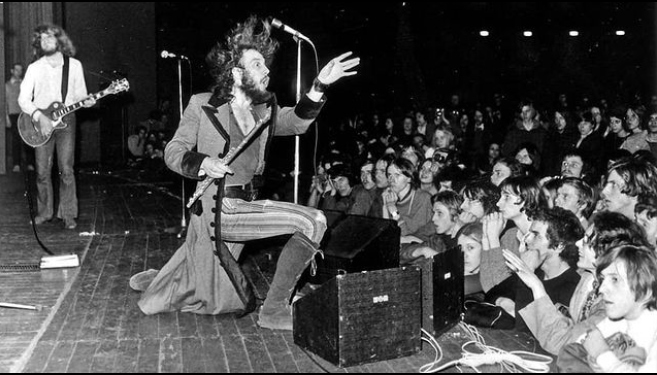Usually, a rock band has one or two guitarists, a bass player, a drummer, and a vocalist. Some have a keyboardist. However, when a unique instrument is added to these, without missing its fundamental features, an outstanding differential arises. This is the case of Jethro Tull, formed in 1968 and whose main axis is the priceless figure of their founder, lyricist, and vocalist Ian Anderson. In addition to being the head of the band, Anderson plays the flute like few others and gave out all of his talents in this masterpiece made in April 1971, Aqualung.
The work begins with the song Aqualung, sung in a dramatic way (characteristic of Anderson) and with a riff for the platformer. The music alternates fast and slow moments without missing a beat.
‘Aqualung’ is something more than the title of Jethro Tull’s fourth studio effort and something more than the title of the first half of said work: it is the title of a rock hymn of great rank and that shines with its own light in popular music from the 70s.
In this regard, the testimony of Ian Anderson’s first wife, Jennie Franks, who was then studying at the School of Art, is revealing and exciting. On one day in that year in 1971, Jennie was taking photographs of some homeless people from Victoria’s Salvation Army for a School project, and as she captured those images, she was shocked to hear them tell their stories of how they all quickly passed from lead a normal productive life to another where they had to look for scraps of food in the parks. One homeless man, in particular, caught her eye, even making friends with him: she offered to give him the photos she took of her once the exhibition was over, an idea that the homeless man in question took skeptically. Hence, the cover artwork of the album.
The theme-title and the atmosphere already flushes to greatness through a flute, with that playful riff that strikes us quickly and together with the brilliant voice of Ian Anderson, the architect of everything that we are going to eat here, relating life to us of the man who appears on the cover, none other than Mr. Aqualung, an endearing homeless man with nothing to do but watch the girls pass by with malicious intentions. Mind-boggling changes of pace plus a frenzied solo that’s some of the best we’ve heard in our lives.
Jethro Tull, recorded here what is said to be a gem that would go down in history. And although later others of greater or lesser depth came, among them the well-known and cyclopean Thick as a Brick, which was, as you can imagine, thick like a brick, or rather like a concrete wall.

